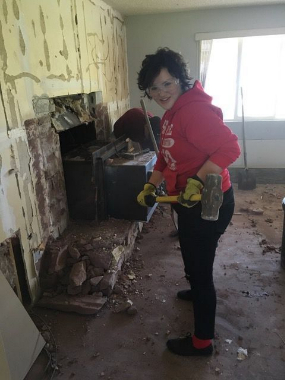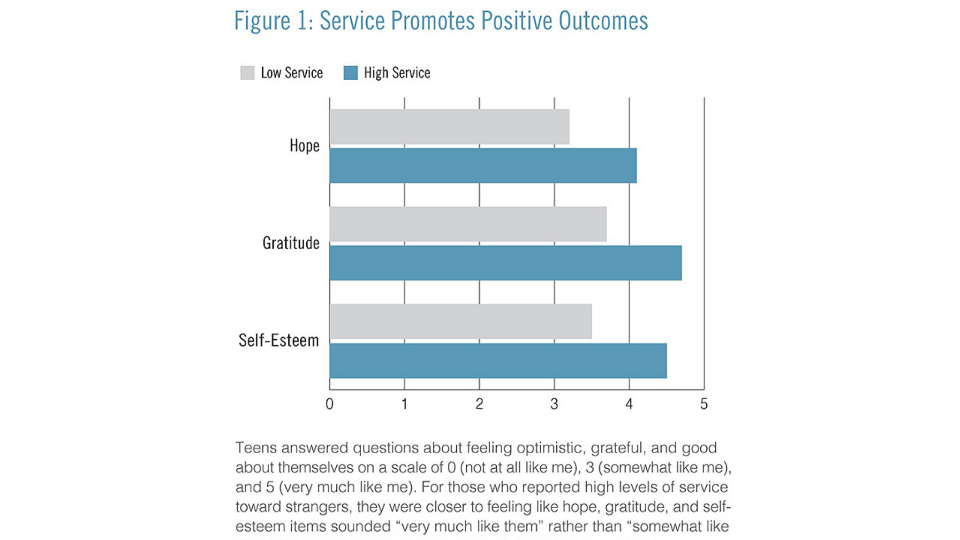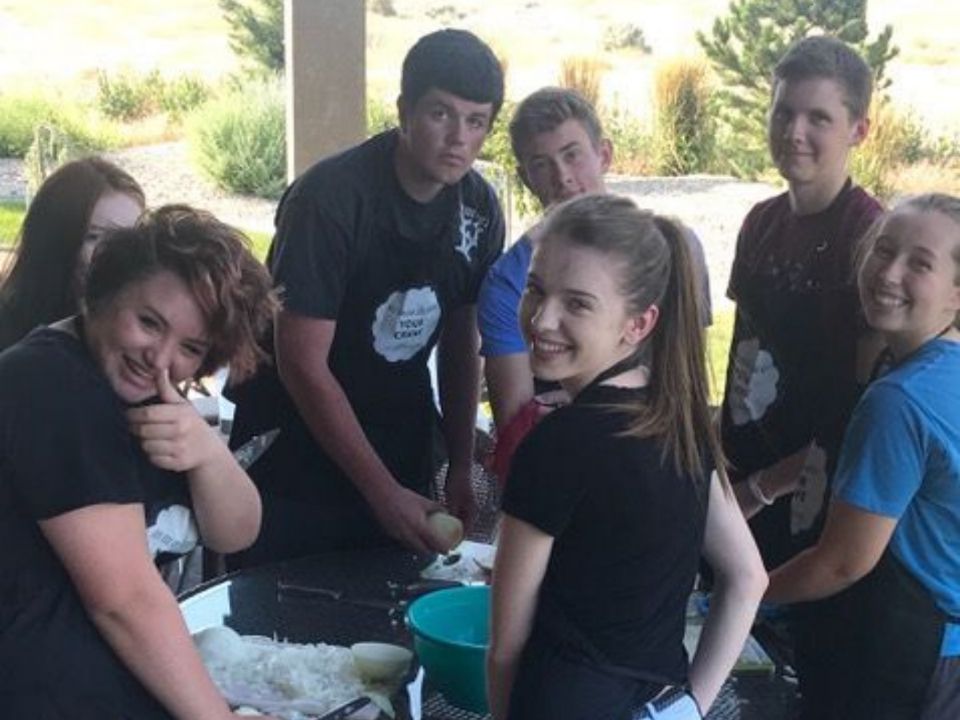- Teens-serving
- Teens-serving
- Teens-serving
- teens-serving
- Teen-serving
- Teens-serving
- Teens-serving
- teens-serving
| Temple Square is always beautiful in the springtime. Gardeners work to prepare the ground for General Conference. © 2012 Intellectual Reserve, Inc. All rights reserved. | 1 / 2 |
This story appears here courtesy of TheChurchNews.com. It is not for use by other media.
By Mary Richards, Church News
Editor’s note: While many with feelings of anxiety and depression have found strength in doing service, this is not a replacement for professional help in addressing mental health. For more resources, please visit mentalhealth.ChurchofJesusChrist.org or talk to a health care provider.
When Meg Stringam Bjorklund was 13 years old, she had just changed schools and didn’t have many friends. She hid in the school bathroom at lunchtime or would call her mom crying. At home, she often stayed alone in her room.
“I wanted to quit school,” Bjorklund said. “I hit a low with depression and anxiety. I really shut down in social situations.”
Then her mother, Autumn Stringam, received a Church calling to be a JustServe specialist in Nampa, Idaho. JustServe.org — a website and app where community organizations and charitable groups post their volunteer needs — was relatively new in the area and needed help getting going.
Over the months, Stringam took Bjorklund with her to service projects large and small around the Treasure Valley area of Idaho.

Teens-serving
Meg Bjorklund, then Meg Stringam, approaching age 14, works on a JustServe service project in Nampa, Idaho, in 2017. Photo by Autumn Stringam, courtesy of Church News.All rights reserved.“The last thing I wanted to do was go out and serve in my community with people I’d never met and interact in awkward situations,” remembered Bjorklund. But it became easier as she persevered.
Bjorklund — now almost 20 years old, newly married and living in the Nampa Idaho West Stake — said service brought her out of her depressed state and helped her see Heavenly Father’s love for her and all His children in many new ways.
She grew empathy as she served at homeless shelters or with those facing poverty. She sat down and listened to people talk about their own challenges.
“It made me realize that I’m not the only one who struggles. And I could help these people by giving them a hot meal and seeing a smile on their face,” she said.
For a while, Bjorklund was participating in service projects after school four days a week — keeping her too busy to worry about herself.
She painted walls, hefted tools, cooked meals, delivered sandwiches, hauled bricks, entertained children, poured juice, collected supplies and sang songs.
“Service changed my life,” she explained.
Research on Service and Depression
Bjorklund’s experience is backed by research. Dr. Laura Padilla-Walker, dean of the College of Family, Home, and Social Sciences at Brigham Young University, said there is a link between depressive symptomology and service.
“Engaging in prosocial behaviors during the teen years is associated with a variety of protective factors, including better relationships with friends and family, hope, persistence, gratitude and self-esteem,” Padilla-Walker said. “In turn, relationships and self-esteem are then associated with lower levels of depression.”
Helping others facilitates a sense of purpose and self-esteem in young people, which protects them from feelings of worthlessness and depression.
“If we can help young people to engage in serving others and build a self-concept that includes being needed and valuable to others, that can be helpful in combating depressive symptoms,” she said.
Psychologist Dr. Susan Albers explained in a recent article from the Cleveland Clinic that when someone helps someone else, their brain secretes “feel good” chemicals such as:
- Serotonin (which regulates mood).
- Dopamine (which gives a sense of pleasure).
- Oxytocin (which creates a sense of connection with others).
| Temple Square is always beautiful in the springtime. Gardeners work to prepare the ground for General Conference. © 2012 Intellectual Reserve, Inc. All rights reserved. | 1 / 2 |

Teens-serving
Research suggests that teens who report high levels of service feel more grateful and more hopeful. Graphic by JustServe.org, courtesy of Church News.All rights reserved.
Giving can stimulate the brain’s mesolimbic pathway, or reward center, while releasing endorphins.
“When we do things for other people, it makes us feel much more engaged and joyful,” Albers said. “That’s good for our health and our happiness.”
Researchers have found that giving to others can lower blood pressure. Other studies show that people who volunteer tend to live longer. Gift-giving or volunteering can reduce levels of cortisol, which is the stress hormone that can make a person feel overwhelmed or anxious.
Helping Strangers
Padilla-Walker said serving strangers in particular protects teens. This could be because serving strangers — compared to family members or friends — represents a relatively high-cost behavior, something that goes above and beyond.
Young adolescents who helped strangers saw an increase in their self-esteem from ages 11 to 14. They felt better about who they were.
When teens engage in these sorts of behaviors consistently, they are less likely to focus on themselves and their own problems and are more likely to see the good in what they have and feel hopeful.

teens-serving
Research finds that service toward strangers protects young people from getting involved in problem behaviors. Graphic by JustServe.org, courtesy of Church News.All rights reserved.
Meanwhile, young people who serve strangers are more likely to avoid getting involved in problem behaviors.
“One study found that prosocial behavior toward strangers — but not toward family members or friends — was associated with lower levels of aggression and delinquency two years later,” Padilla-Walker said.
Research also shows that serving others helps teens develop a moral identity and also connect with other friends who have positive values and behaviors, all of which can protect from problem behavior.
Bjorklund said this was exactly the case for her — at a time when she needed friends, she gained a service group of peers her own age.
“I met them doing service, and it was the best. I made friends with kids that influenced me to do good,” she said. “Serving helped me find friends that I still have now that I would not have known before.”
Becoming Like the Savior
Bjorklund found that serving others blessed her with a greater understanding and appreciation for how Jesus Christ served those in need during His ministry on the Earth. And she started to think of others’ needs before her own.

teens-serving
Christ at the pool of Bethesda, reaching toward the man waiting there.2023 by Intellectual Reserve, Inc. All rights reserved.
“As I served others, I began to understand the great love that Heavenly Father and Jesus Christ had for me,” she said. “When I started serving like Christ, I became like Christ by serving selflessly, not expecting anything in return. When I finally understood the love Heavenly Father has shown me, I began loving others as He has loved me.”
Stringam posted a video on Facebook about the change she saw in her daughter.
“She found Jesus when she started acting like Him,” Stringam said. “If you don’t know who you are, find yourself by giving of your time and talents. If you don’t have Jesus in your life, find Him by acting like Him and watch all of the other feelings sort themselves out.”
John 13:34–35 has the Savior’s call: “A new commandment I give unto you, That ye love one another; as I have loved you, that ye also love one another. By this shall all men know that ye are my disciples, if ye have love one to another.”
King Benjamin told his people: “When ye are in the service of your fellow beings ye are only in the service of your God” (Mosiah 2:17).
And Doctrine and Covenants 58:26–28 teaches, “Verily I say, men should be anxiously engaged in a good cause, and do many things of their own free will, and bring to pass much righteousness.”
President M. Russell Ballard, then of the Quorum of the Twelve Apostles, shared how serving others stems from a love of God and Christ in his April 2011 general conference talk “Finding Joy Through Loving Service.”
“When this pure love of Christ — or charity — envelops us, we think, feel and act more like Heavenly Father and Jesus would think, feel and act. Our motivation and heartfelt desire are like unto that of the Savior,” President Ballard said.
Elder Ronald A. Rasband of the Quorum of the Twelve Apostles April 2022 general conference explained that Jesus Christ is the perfect example of love and service.
“During His ministry, He cared for the poor, healed the sick and the blind. He fed the hungry, opened His arms to little children, and forgave those who wronged Him, even crucified Him.
“The scriptures describe that Jesus ‘went about doing good.’ So must we,” Elder Rasband said (“To Heal the World”).

Teens-serving
Meg Bjorklund, then Meg Stringam, lower left, at age 13 or 14, works on a JustServe project with a group of teenage peers to prepare freezer meals for a children’s lunch service at the Salvation Army in Nampa, Idaho, in 2017. Photo by Autumn Stringam, courtesy of Church News. All rights reserved.
Ideas for How to Serve Others
Albers said when it comes to volunteering, giving gifts and serving others, it’s not about money. “Some of the best gifts don’t cost anything,” she said. “In fact, acts of service often reflect the most thought and care and can be more meaningful than anything you purchase.”
An article by Merrilee Browne Boyack in the United States and Canada section of February’s “Liahona” magazine gave suggestions for parents to incorporate service in the family: start at home and then expand to the community — with the Spirit as a guide.
Helpful points included:
- Plan well.
- Make the projects as hands-on as possible.
- Reinforce the process.
Boyack wrote: “People often ask, ‘What should we do?’ and ‘Where do we start?’ I would say, start with Heavenly Father. I testify that the Spirit will guide you as parents to those things that will be marvelous opportunities for you and your family to serve. Pray. Listen. Be patient. Be brave. And you will be guided.”
Bjorklund said parents of teenagers can encourage them to download the JustServe app on their phones and set filters for location, interests and talents. Then they can find service projects near them involving something the teens feel like they can do. But they shouldn’t be afraid of trying something new or challenging.
“The first service project is the hardest — getting there, getting out of your shell and figuring out what you are supposed to do can be stressful,” Bjorklund said. “If you can get past the first service project, you will get that feeling that is everlasting — the realization that there’s something out there bigger than yourself.”
Padilla-Walker said parents and Church leaders are often looking for ways to build youth and help protect them against negative outcomes.
“Programs like JustServe are a great way to help young people get involved in serving strangers and neighbors in the community and can have a meaningful impact on positive outcomes for youth — including self esteem, self-confidence, gratitude and hope — as well as protecting against problem behaviors, such as aggression and poor self-esteem,” she said.
She recommended parents and leaders look for high-quality opportunities where youth can see the benefits of their behaviors on others and where they can build positive relationships with friends and family members as they serve.
“This will not only help those they serve, but the teenagers will also benefit greatly as they put aside their own worries and concerns and serve others,” Padilla-Walker said.
